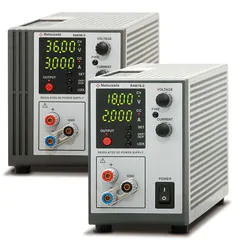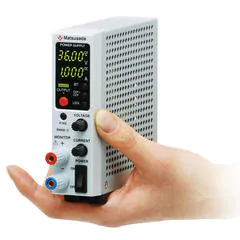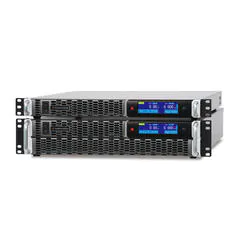
What is surface treatment?
Surface treatment is an additional process applied to the surface of a material for the purpose of adding functions such as rust and wear resistance or improving the decorative properties to enhance its appearance.
Painting, such as that applied to the body of an automobile, printing of the manufacturer's name and other information on the surface of home appliances, and "plating" applied under the paint on guardrails, are typical examples of surface treatment.
Heat treatment, such as quenching, applied to metal parts such as gears and blades, is also classified as surface treatment.
Surface treatments can be broadly classified into removal processes, such as scraping or melting the surface, and additive processes, such as painting, which add something else to the surface.
Methods of surface treatment
The most commonly used surface treatments include the following methods. Surface treatments that use electricity and require a dedicated power supply are indicated in red letters in the table.
| Category | Process | Explanation |
|---|---|---|
| Cleaning | Cleaning | Cleaning is a process to remove oil, surface oxides, burrs and foreign substances. It can prolong the life of painting and plating. Among the cleaning processes, blasting and honing use abrasives and grinding wheels, respectively, so these processes can be said to be both cleaning and polishing. |
| Blasting | ||
| Honing | ||
| Polishing | Mechanical polishing |
Polishing the surface to make it smooth. While polishing is generally associated with rubbing with a grinding stone or brush, chemical or electropolishing slightly dissolves the surface to make it smooth. Electropolishing uses electrolysis to dissolve the surface of the part in a solution. |
| Chemical polishing | ||
| Electropolishing | ||
| Painting | Spray painting |
This is the process of adding paint to a surface. This is done to improve corrosion resistance and decorative properties. Electrostatic coating is a type of coating in which the paint is charged and adheres efficiently with the force of static electricity. Powder coating is also a type of electrostatic coating. Electrodeposition coating is a method of depositing paint on the surface of a part by electrolysis of a solution of special paint and is used for the base of automobile bodies. |
| Electrostatic coating (Electrostatic painting) | ||
| Electrodeposition coating | ||
| Plating | Electroplating (electrolytic plating) |
Plating is the process of covering the surface of a component with a thin film of another metal. Electroplating is a method of depositing a coating on the surface of a part by electrolyzing a solution. This is mainly done on metals such as iron to provide corrosion resistance and decorative properties. In some cases, plating is applied to the surface of plastics for decorative purposes, but the number of such applications has been decreasing in recent years due to improvements in coating technology. |
| Chemical plating | ||
| Hot dip coating | ||
| Heat treatment | Surface quenching | This is a treatment that hardens the surface of metals to improve their resistance to wear and fatigue. By heating and cooling the metal, the structure of the metal surface is changed, making it harder. In surface quenching, there is a method called high-frequency quenching, in which a high-frequency current is applied to a coil, heating the part in the manner of a so-called induction heater. |
| Carburizing | ||
| Nitriding treatment |
Surface treatment process
There are several types of surface treatment, but here we will use plating as an example and explain electrolytic plating. There are several types of electrolytic plating: gold, silver, copper, nickel, zinc, and chrome.
- 1 Pre-work
- Barrel polishing is performed to remove burrs from the product, and the jig for plating (a tool to hold the product to be plated and make it easier to work with) is attached.
- 2 Pretreatment
- Chemical treatments such as alkaline degreasing, pickling, electrolytic cleaning, and acid activation are used to prepare the material for plating.
- 3 Plating
-
The material is immersed in the plating bath while still attached to the jig and then plated by energizing. Electrolytic plating utilizes the mechanism that when an electric current is passed through a solution containing metal ions, the metal is deposited on the cathode side by electrolysis.
By inserting a material to be plated with a cathode electrode and an anode electrode into the plating solution and passing an electric current through them, metal is deposited on the surface of the material to be plated, forming a plating film. Depending on the base material and the type of plating, multiple layers of plating are applied, including base plating.
- 4 Post-treatment
- Chromate treatment, discoloration prevention, drying, etc. are performed to stabilize the plating, and the plating solution is neutralized.
- 5 Post-processing
- The plated material is removed from the jig and undergoes a baking process (a process to remove hydrogen from the product to prevent cracking due to hydrogen absorption by the plating) to fix the plating.
Advantages of Electrolytic Plating
The advantages of electrolytic plating are as follows
- Low cost
- Produces a glossy finish
- Creates corrosion resistance
- Plating speed is fast
- Plating on a wide variety of metals and alloys
- Low thermal impact on the metal to be plated
The Role of Power Supplies in Surface Treatment
Today, surface treatment technologies are used in a variety of industries. Electrolytic plating, in particular, will continue to expand its applications and will require high-quality, economical technology.
Electrolytic plating uses electrolysis, which requires a power source that can deliver Direct Current (DC) power supply. If the voltage is unstable, the deposition of the plating will also be unstable, so voltage stability is required to improve the quality of the product.
In addition, the amount of plating deposited is proportional to the accumulated current, so it is important to be able to flow more current efficiently.
Furthermore, since chemicals are used for plating, the environment is prone to rust and corrosion due to corrosive gases and high humidity. Therefore, not only does the power supply enclosure need to be environmentally resistant, but it is also necessary to install the power supply in a different location from the room where the plating will take place.
In order to solve these problems, it is essential to install power supply equipment suitable for electrolytic plating. At Matsusada Precision, we sell the best power supply for electroplating.
Related Technical Articles
Recommended products
Matsusada Precision's products are used in the field of precision electroplating and surface treatment.






